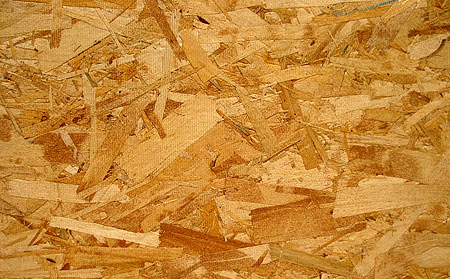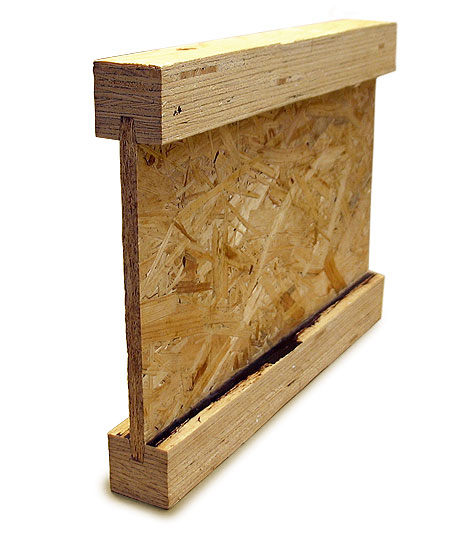OSB-board

Oriented strand board (OSB) is a type of engineered wood similar to particle board, formed by adding adhesives and then compressing layers of wood strands in specific orientations. It was invented by Armin Elmendorf in California in 1963. OSB uses the wood from trees that grow quickly and sustainably, like aspen poplar, southern yellow pine and mixed hardwood species. The process of making OSB involves cutting the logs into strands that are then dried, organized and treated with wax and binders. To form panels, these strands are grouped into big sheets and pressurized at a high temperature.
Most of the world’s OSB is made in the United States and Canada in large production facilities.
Uses
OSB is suitable for load-bearing applications in construction. It is now more popular than plywood in structural panel market. The most common uses are as sheathing in walls, flooring, and roof decking.
For exterior walls panels are available with a radiant-barrier layer pre-laminated to one side; this eases installation and increases energy performance of the building envelope.
OSB also can be seen also in furniture production.
Properties
- OSB have no internal gaps, and can be water-resistant, although they do require additional membranes to achieve impermeability to water and are not recommended for exterior use.
- The finished product has properties similar to plywood, but is uniform and cheaper. When tested to failure, OSB has a greater load-bearing capacity than milled wood panels. It has replaced plywood in the North American structural panel market.
- While OSB does not have a continuous grain like a natural wood, it does have an axis along which its strength is greatest. This can be seen by observing the alignment of the surface wood chips.
Intrallam 
Laminated strand lumber is similar to osb but it’s composed by poplar wood shavings with particular dimensions (often about 25×300 mm and 0,8 mm thick) bound by waterproof glues in order to form an homogeneous structured panel. These panels are very resistant to bad weather.
Shavings can be lenghtwise or crossed oriented. The first ones are often used for floor beams or roofs, while the second ones are used for pluggings (walls, roofs, floor beams etc.) because they have more uniform mechanical characteristics towards both directions.